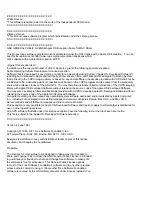
53
9GB virtual disk is changed to a 20GB virtual disk. Select
OK
. The virtual disk presented to the VM
will now be 20GB.
Start the VM. Depending upon the VM’s operating system, different tools must be used to extend a
partition and make the extra space known as a file system to the virtual machine. Different options
exist, as a new partition may be created or the original partition may be expanded. Third-party tools,
such as Partition Magic, also exist and may perform this function. In this example, a Windows file
system’ boot partition will be expanded with the PowerQuest PartitionMagic utility, as the Windows
tool diskpart may only be used to expand non-system boot partitions. Note that after the VM starts
with the additional virtual disk space allocated, this new space is seen in Disk Management as
unallocated and un-partitioned.
In this example, a third-party utility PartitionMagic is used to resize a live Windows NTFS file system.
Note the size of the expanded partition is now 20GB. Alternatively, a new partition may be created
in the free space.
Figure 46
Increasing storage volume size
Uniqueness of VMs
Each machine on a network must be unique in order to identify one machine from another. On
networks, each NIC has a unique MAC address and each a unique IP address. Within a domain,
each machine a unique host name. Within Windows networks, each Windows machine caries a
unique Security Identifier, SID. Within XenServer hosts or resource pools, each storage repository
contains a unique UUID. With each storage repository, each virtual disk also contains a unique UUID.
The purpose of each of these uniqueness attributes is to provide that instance of a machine its own
identity, and a virtual machine is no different. However, virtual machines may be particularly
susceptible to creating duplications as functions of replicating an entire VM and its storage become
easier in virtualized environments and storage based replications in SAN environments.
With Windows-based machines, the Security Identifier is a unique name which is assigned by a
Windows Domain controller during the log on process that is used to identify a subject. A SID has a
format such as S-1-5-21-7623811015-3361044348-030300820-1013. Microsoft supports a
mechanism for preparation of a machine for a golden image cloning process with a utility called
sysprep. Note that this is the only supported way to properly clone a Windows VM. Sysprep modifies
the local computer SID to make it unique to each computer. The sysprep binaries are on the Windows
installation media in the \support\tools\deploy.cab file.











































